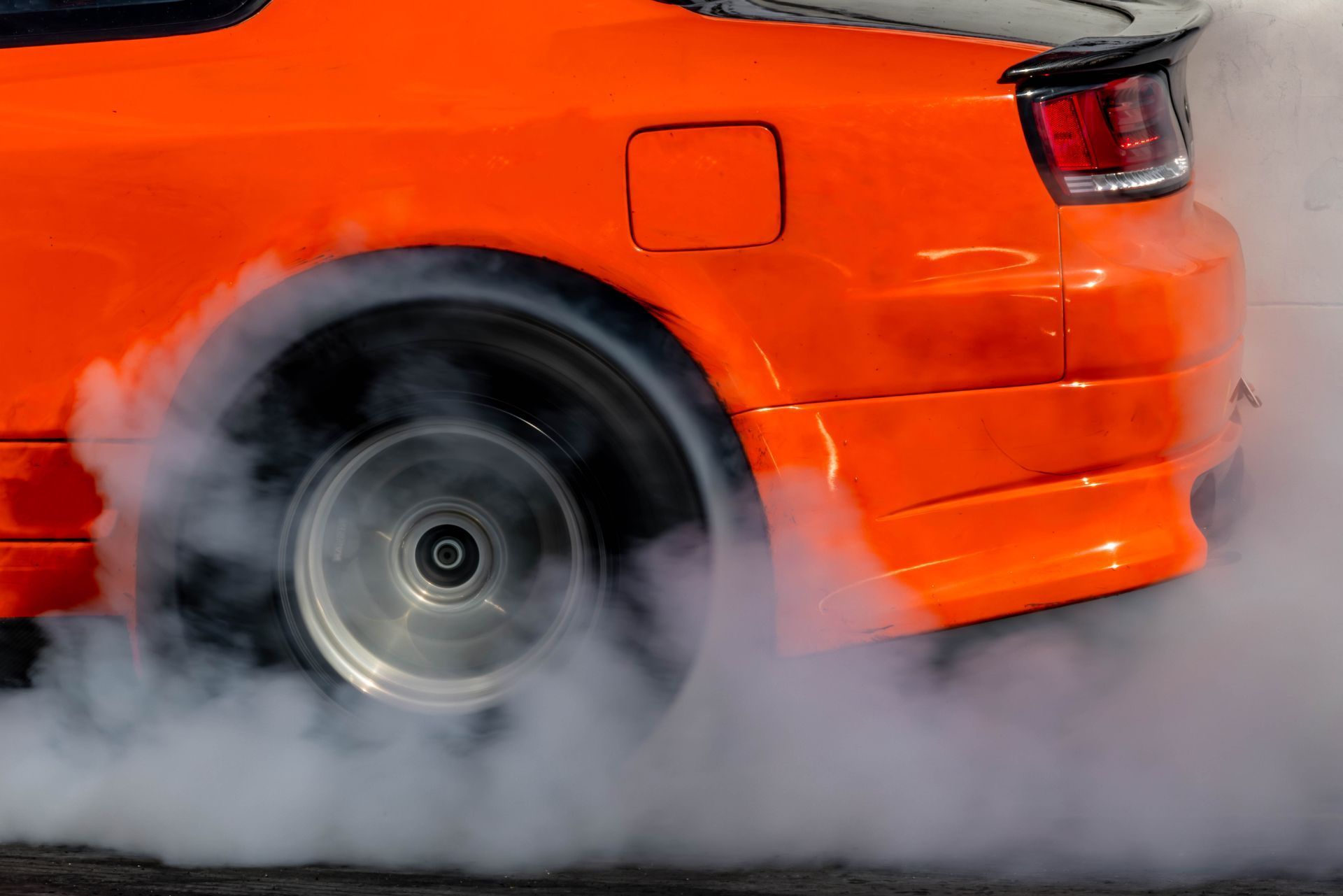Minnesota High-Performance Vehicle Insurance

See How We're Different
or call us: (763) 242-1668
Common Personal Insurance Policies
By: Matt Larsen
Owner of Capstone Insurance Group & Umbrella Insurance Advisor
763-242-1668
Index
Understanding High-Performance Vehicles in Minnesota
Key Factors Affecting High-Performance Vehicle Insurance in Minnesota
Types of Insurance Coverage for High-Performance Vehicles
Finding the Right Insurance Provider in Minnesota
Legal Requirements and Minnesota Insurance Regulations
Tips for Lowering High-Performance Vehicle Insurance Costs in Minnesota
Conclusion: Protecting Your High-Performance Vehicle in Minnesota
Contact Us
For car enthusiasts in Minnesota, owning a high-performance vehicle is more than just a mode of transportation—it’s a passion. Whether it’s a sleek sports car, a powerful muscle car, or a finely tuned exotic, these vehicles offer thrilling driving experiences. However, insuring such vehicles requires special attention. High-performance cars often come with unique risks, higher repair costs, and specialized coverage needs. This comprehensive guide will walk you through everything you need to know about high-performance vehicle insurance in Minnesota, helping you protect your prized possession effectively and affordably.
Understanding High-Performance Vehicles in Minnesota
Before diving into insurance specifics, it’s important to clarify what qualifies as a high-performance vehicle. Generally, these are cars designed for superior speed, handling, and acceleration compared to standard vehicles. They often feature enhanced engines, advanced suspension systems, and specialized components. The engineering behind these vehicles is a testament to automotive innovation, with manufacturers investing heavily in technology to enhance performance while ensuring safety and reliability.
In Minnesota, high-performance vehicles can range from sports cars like the Chevrolet Corvette and Porsche 911 to muscle cars like the Ford Mustang Shelby GT500. Exotic vehicles such as Lamborghinis and Ferraris also fall under this category. These cars are not only faster but often come with higher repair and maintenance costs, which directly impact insurance considerations. Moreover, the allure of these vehicles often attracts enthusiasts who participate in car shows, track days, and other events, further emphasizing the community aspect of high-performance vehicle ownership.
Why High-Performance Vehicles Require Different Insurance
High-performance vehicles present unique challenges for insurers. Their enhanced capabilities can lead to increased accident risk, and replacement parts or repairs can be significantly more expensive than those for standard vehicles. Additionally, these cars may be targeted more frequently for theft due to their value and desirability. The high-speed nature of these vehicles also means that drivers may be more inclined to push the limits, which can lead to a higher likelihood of accidents, further complicating insurance assessments.
Because of these factors, insurance companies often classify high-performance vehicles in a separate category, which can affect premium rates and coverage options. Understanding these distinctions helps owners make informed decisions about their insurance policies. It's also worth noting that some insurers offer specialized coverage tailored specifically for high-performance vehicles, which can include options like agreed value coverage, track day insurance, and even coverage for modifications that enhance performance. This nuanced approach to insurance not only protects the vehicle but also acknowledges the unique lifestyle and risks associated with owning a high-performance car.

Key Factors Affecting High-Performance Vehicle Insurance in Minnesota
Several elements influence the cost and availability of insurance for high-performance vehicles. Being aware of these factors can help owners optimize their coverage and manage expenses.
Vehicle Value and Repair Costs
High-performance vehicles generally have higher market values than standard cars. For example, a base model sports car might cost upwards of $60,000, while exotic models can easily exceed $200,000. Insurance premiums are often based on the vehicle’s value, so more expensive cars typically carry higher premiums.
Moreover, repair costs for high-performance vehicles are usually steep. Specialized parts, custom paint jobs, and labor from certified mechanics contribute to these expenses. Minnesota’s harsh winters can also exacerbate wear and tear, making comprehensive coverage essential. Owners should also consider the potential costs associated with performance modifications, which can further increase the vehicle's value and, consequently, the insurance premium. Regular maintenance and inspections can help in identifying issues early, potentially reducing repair costs over time.
Driver Profile and Usage
Insurance companies assess the risk posed by the driver when setting premiums. Factors such as age, driving history, and annual mileage play a role. Younger drivers or those with a history of accidents may face higher rates. Additionally, how often and where the vehicle is driven matters—high-performance cars used mainly for weekend drives or stored in a garage may qualify for discounts.
Furthermore, the type of driving experience can influence insurance rates. For instance, drivers who participate in track days or racing events may be seen as higher risk, prompting insurers to adjust their premiums accordingly. Conversely, those who engage in safe driving courses or have a clean driving record can often negotiate better rates, showcasing the importance of maintaining a responsible driving profile.
Location and Theft Risk
Urban areas in Minnesota, such as Minneapolis and St. Paul, tend to have higher rates of vehicle theft and vandalism compared to rural regions. High-performance vehicles are attractive targets for thieves, which can increase insurance premiums in these areas. Installing security systems and storing the vehicle in secure locations can help mitigate this risk.
Additionally, local crime rates can vary significantly, and some neighborhoods may have community programs aimed at reducing vehicle theft, which can positively influence insurance rates. Owners should also consider parking options; using a garage or a secure lot can not only protect the vehicle from theft but also from the elements, which can further reduce the likelihood of damage and subsequent claims.
Coverage Options and Deductibles
The type and extent of coverage selected impact insurance costs. Standard policies include liability, collision, and comprehensive coverage, but owners of high-performance vehicles might consider additional protections such as agreed value coverage or coverage for aftermarket parts. Choosing higher deductibles can lower premiums but increases out-of-pocket costs in the event of a claim.
Moreover, many insurers offer specialized policies tailored for high-performance vehicles that include unique features like track day coverage or roadside assistance specifically designed for high-performance cars. Understanding these options can empower owners to select a policy that not only meets their needs but also provides peace of mind while enjoying their vehicles. Additionally, reviewing policy terms regularly can help ensure that coverage remains adequate as the vehicle's value or usage changes over time.
Types of Insurance Coverage for High-Performance Vehicles
Understanding the various coverage options is crucial to tailoring a policy that fits your needs and protects your investment.
Liability Insurance
Liability insurance is mandatory in Minnesota and covers bodily injury and property damage you cause to others in an accident. While it doesn’t cover damage to your own vehicle, it protects you financially against claims from other parties. Given the high speeds associated with performance cars, liability limits should be carefully considered to ensure adequate protection. It's worth noting that many insurers recommend higher liability limits for high-performance vehicles due to the increased risk of severe accidents. This is particularly important in a state like Minnesota, where winter driving conditions can lead to unexpected challenges, making comprehensive liability coverage even more critical.
Collision Coverage
This coverage pays for damage to your vehicle resulting from a collision, whether with another vehicle or an object. For high-performance vehicles, collision coverage is essential due to the high cost of repairs. It’s important to review your deductible and coverage limits to balance premium costs with potential out-of-pocket expenses. Additionally, some insurance companies offer specialized collision coverage tailored for performance vehicles, which may include provisions for the use of original manufacturer parts in repairs, ensuring that your car is restored to its original condition after an accident.
Comprehensive Coverage
Comprehensive insurance protects against non-collision-related damage such as theft, vandalism, fire, or natural disasters. Given the increased theft risk for high-performance vehicles, comprehensive coverage is highly recommended in Minnesota. Moreover, some insurers provide additional benefits under comprehensive coverage, such as rental car reimbursement while your vehicle is being repaired or replaced. This can be particularly advantageous for performance car owners who rely on their vehicles for daily driving or weekend events, ensuring that they remain mobile even in the event of a loss.
Agreed Value vs. Actual Cash Value Policies
Standard insurance policies typically pay out the actual cash value (ACV) of a vehicle in the event of a total loss, which factors in depreciation. However, high-performance cars often appreciate or maintain value due to rarity and condition. Agreed value policies allow owners to set a predetermined payout amount, ensuring full coverage of the vehicle’s worth. This option is particularly beneficial for collectors or those with extensively modified cars. Additionally, it is essential to periodically reassess the agreed value as market conditions change, ensuring that your policy reflects the current worth of your vehicle, especially if it has undergone significant enhancements or restorations.
Additional Coverage Options
Some insurers offer specialized add-ons such as coverage for aftermarket parts, custom paint, or enhanced roadside assistance. Gap insurance is another consideration if the vehicle is financed or leased, covering the difference between the car’s value and the remaining loan balance in case of a total loss. Furthermore, performance car owners might want to explore track day insurance, which provides coverage specifically for events at racetracks. This type of policy can protect against damages incurred while participating in high-speed driving experiences, ensuring that enthusiasts can enjoy their vehicles to the fullest without the worry of financial repercussions from potential accidents on the track.

Finding the Right Insurance Provider in Minnesota
Not all insurance companies offer specialized coverage for high-performance vehicles, so choosing the right provider is crucial.
Specialized Insurers vs. Traditional Providers
Some insurers specialize in high-performance and classic car insurance, offering tailored policies and expertise. Companies like Hagerty and Grundy specialize in collector and performance vehicle insurance, often providing agreed value coverage and flexible usage terms. Traditional insurers such as State Farm, Progressive, and Allstate also offer high-performance vehicle insurance but may have different coverage options and pricing structures. It's important to assess the unique needs of your vehicle, as specialized insurers often understand the nuances of high-performance cars, including their maintenance costs and potential depreciation rates, which can significantly influence the policy terms.
Additionally, specialized insurers may offer unique services such as access to a network of repair shops that are experienced in handling high-performance vehicles. This can ensure that your car is in the hands of professionals who understand the specific requirements for repairs and maintenance, which can be a significant advantage in the event of a claim.
Comparing Quotes and Coverage
Getting multiple quotes is essential to find the best balance of coverage and cost. When comparing, pay attention not only to premiums but also to coverage limits, deductibles, and exclusions. Reading customer reviews and checking the insurer’s financial stability can also provide insights into their reliability and claims handling. Furthermore, consider the customer service reputation of each provider; a company that is responsive and helpful can make a significant difference when you need assistance or have questions about your policy.
It’s also wise to inquire about the claims process specifically for high-performance vehicles. Some insurers may have streamlined processes for these types of claims, ensuring that you can get back on the road as quickly as possible. Understanding how each company handles claims can be a deciding factor in your choice of insurer.
Discounts and Savings Opportunities
Many insurers offer discounts that high-performance vehicle owners can leverage. These may include multi-policy discounts, safe driver discounts, low mileage discounts, and discounts for installing anti-theft devices. Some companies also provide reduced rates for vehicles stored in garages or driven only seasonally. Additionally, engaging in car clubs or organizations dedicated to high-performance vehicles can sometimes unlock exclusive discounts, as insurers often partner with these groups to promote safe driving and responsible ownership.
Moreover, keeping your driving record clean can lead to further savings. Many insurers reward drivers who have not filed claims or have maintained a clean driving history with lower premiums. It’s beneficial to regularly review your policy and discuss potential discounts with your agent, as new opportunities may arise that can help reduce your overall insurance costs while still providing comprehensive coverage for your prized vehicle.
Legal Requirements and Minnesota Insurance Regulations
Understanding Minnesota’s insurance laws is vital to ensure compliance and avoid penalties.
Minimum Liability Coverage Requirements
Minnesota law requires all drivers to carry minimum liability coverage of 30/60/10, which means $30,000 for bodily injury per person, $60,000 for bodily injury per accident, and $10,000 for property damage. However, these minimums may be insufficient for high-performance vehicle owners, who should consider higher limits to protect against costly claims.
Proof of Insurance and Penalties
Drivers must carry proof of insurance at all times and present it upon request by law enforcement. Failure to maintain valid insurance can result in fines, license suspension, and vehicle impoundment. High-performance vehicle owners should be especially diligent, as the financial stakes are higher.
State-Specific Considerations
Minnesota is a no-fault insurance state, meaning your own insurance covers your injuries regardless of fault in an accident. Personal Injury Protection (PIP) is mandatory and covers medical expenses and lost wages. While this does not directly affect vehicle coverage, it’s an important component of overall insurance planning.
Tips for Lowering High-Performance Vehicle Insurance Costs in Minnesota
While insurance for high-performance vehicles can be expensive, there are strategies to help reduce premiums without sacrificing coverage quality.
Maintain a Clean Driving Record
Safe driving is the most effective way to keep insurance costs down. Avoiding accidents and traffic violations demonstrates responsibility and reduces risk in the eyes of insurers.
Limit Annual Mileage
Many insurers offer discounts for low mileage. If your high-performance vehicle is a weekend or seasonal car, tracking and reporting limited use can lead to savings.
Install Security Features
Adding alarms, GPS trackers, and immobilizers can reduce theft risk and may qualify you for discounts. Parking in secure, well-lit areas or garages further protects your vehicle.
Choose Higher Deductibles
Opting for a higher deductible lowers your premium but requires you to pay more out-of-pocket in the event of a claim. Evaluate your financial situation to determine an appropriate balance.
Bundle Insurance Policies
Combining your vehicle insurance with homeowners or renters insurance through the same provider often results in multi-policy discounts.
Conclusion: Protecting Your High-Performance Vehicle in Minnesota
High-performance vehicles offer unmatched driving excitement but come with unique insurance challenges. In Minnesota, understanding the specific risks, coverage options, and legal requirements is essential to securing appropriate protection. By carefully evaluating your vehicle’s value, your driving habits, and available insurance providers, you can find a policy that balances cost and coverage effectively.
Investing time in researching and comparing insurance options, considering specialized coverage like agreed value policies, and implementing risk-reduction strategies can save money and provide peace of mind. Ultimately, the right insurance policy ensures that your high-performance vehicle remains a source of joy rather than financial stress.





